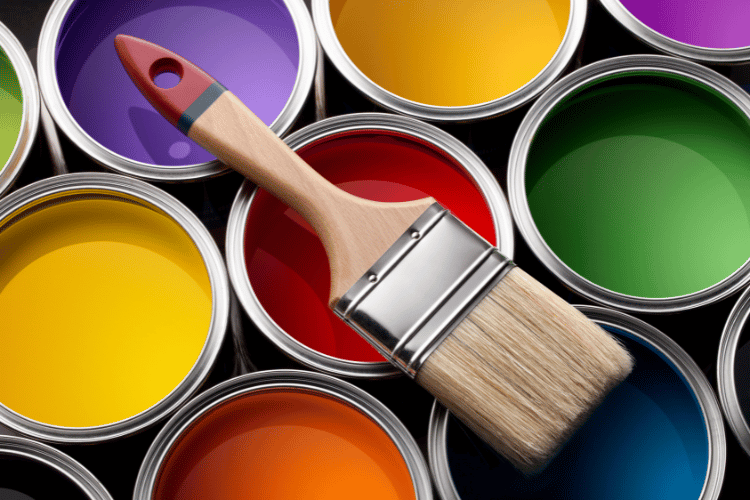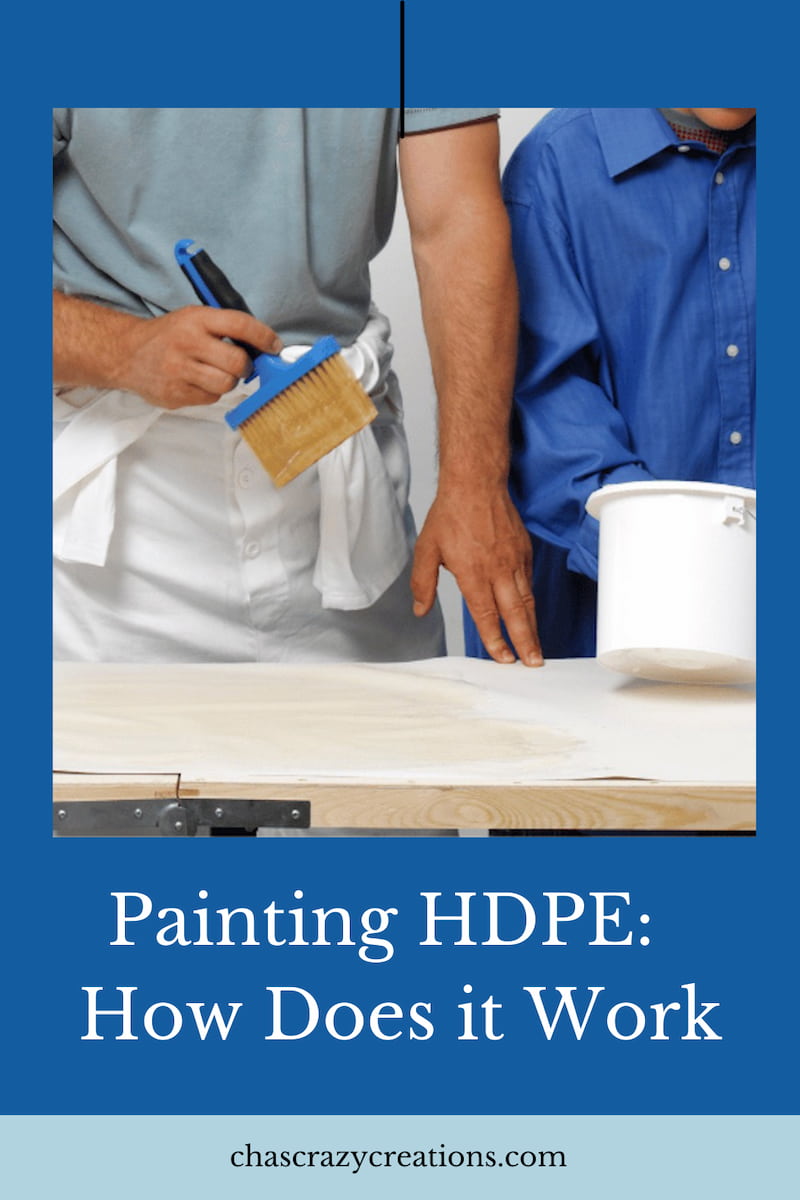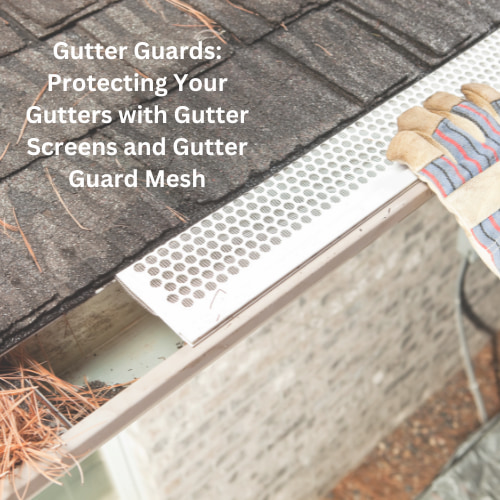Painting HDPE: How Does It Work?
High-density polyethylene is one of the most popular materials invented. It’s a petroleum-based thermoplastic polymer, and it’s so versatile that it is used in multiple industries, like manufacturing food containers, water bottles, cleaning product containers, and shoe parts.
This post may contain affiliate links, I earn from qualifying purchases at no extra cost to you. Click here for my disclosure policy
It can also be used for various DIY purposes. So how does painting HDPE work? How can you select the suitable paint product for this material?
This article will answer all your questions regarding HDPE preparation for paint. So, let’s dive in.

Why Do People Consider Painting HDPE?
HDPE is well-known for its durability and versatility. Unlike other materials that can be affected by temperature, moisture, and light exposure changes, HDPE maintains its physical properties in different weather conditions unless it’s subjected to extreme temperatures, for example.
Moreover, this material isn’t toxic, so it can be used in DIY projects done with children in nurseries and schools, like making a vase. It’s an excellent choice for objects that will be handled frequently because it’s safe and can also be used outside without changes in appearance.
Finally, HDPE can be easily fabricated. It’s one of the most affordable materials for DIY projects, and you can buy it in bulk for a reasonable price.
Preparing HDPE For Painting
HDPE isn’t difficult to paint and can be part of a fast and easy paint job. Yet, it’s essential to consider a few factors before trying to change the color.
Choosing Types of Paint
Many types of paint will work for painting HDPE. When choosing the paint type, you should consider easy application, good coverage, and paint adhesion.
The paint you choose should be formulated to work on plastic, and the formula should stick to the HDPE’s surface. Moreover, you should pay attention to the color, and make sure that it can withstand outdoor conditions, if your HDPE is to be used in outdoor applications.
A two-part paint like Surfacer 2000 is a good choice because it sticks to the polyethylene surface. It’s also available in a wide variety of colors.
Surface Preparation
Proper surface preparation will ensure a good-quality finish once your DIY project is complete. Since this material can be easily recycled, you can use milk jugs, food containers, water bottles, and other HDPE containers for painting purposes.
The first step is to use a degreaser or solvent to clean the plastic surface and remove all the grease and grime that might be sticking to it. Using soapy water might also work if you’ve bought clean HDPE objects to paint.
If the HDPE is extremely dirty, you should use sandpaper. This will help the spray paint or acrylic paint stick to the plastic surface and guarantee a better paint job.
Applying Primer
After using soapy water or a solvent to clean your HDPE, you should let it dry completely. Applying paint on a wet surface will result in bumps that affect the overall quality of the final product.

Then, you should use a suitable primer on the surface. Primers are an adhesion promoter and guarantee a flawless finish for the paint job.
Some primers are mainly designed for metal or wood surfaces, while others can be more versatile. It’s crucial to check the label and ensure your primer can work on plastic surfaces. Otherwise, the paint might not stick.
Using a primer isn’t always a must, but it can help make the paint last a little longer and give your HDPE DIY project an excellent finish.
Applying Paint
Once you’ve applied a coat of primer and let it dry, you can then proceed to apply the paint. Oil-based paint types aren’t recommended for painting HDPE because they affect the plastic surface, causing cracking. So, your object might be brittle and break easily.
Acrylic paints are more suitable because they’re easy to mix and apply. They can also stick flawlessly to the plastic surface.
If you’ve skipped the primer, you should ensure there is no soapy water residue on your HDPE before you apply the first coat of paint. You should also ensure the surface is clean of any dust or debris that might collect under the paint and affect its look.
You can start by filling a spray bottle with water and spraying it directly on the surface. Then, you can apply one coat of paint and let it dry.
Afterward, you can apply a second coat and even a third coat of spray paint, ensuring your brush strokes overlap. This will give you the best coverage.
Curing Paint
Giving the paint time to dry and cure is essential. You should wait enough time between the different paint coats and finally wait before using the product once you’ve applied the final coat.
Some paint types can take several days to cure. You should leave your HDPE object in a dry, cool place, away from the sun, to allow the paint to cure completely.
Can Your Paint HDPE Sheets?
HDPE objects like containers and bottles are different from HDPE sheets. These are used to make various items like walls, toys, and boxes.

These sheets are manufactured to be highly durable. They can be drilled and screwed, but they can’t be glued together. When you apply glue, it won’t stick to the sheet’s surface because they’re slippery and sleek.
For this same reason, you can’t color these sheets. Unless the manufacturer didn’t add the pigment during the manufacturing process, you wouldn’t be able to change their color as part of a DIY project.
Shop any of these stores and I receive a small commission at no cost to you.
 Gettati Folding Adirondack ...Shop on Amazon
Gettati Folding Adirondack ...Shop on Amazon SERWALL Folding Adirondack ...Shop on Amazon
SERWALL Folding Adirondack ...Shop on Amazon LZRS Adirondack Square Outd...Shop on Amazon
LZRS Adirondack Square Outd...Shop on Amazon Giantex Outdoor Bench, 52-I...Shop on Amazon
Giantex Outdoor Bench, 52-I...Shop on Amazon Chaise Lounge for Outdoor, ...Shop on Amazon
Chaise Lounge for Outdoor, ...Shop on Amazon

Wrap Up
HDPE is one of the most versatile and readily available materials. It can be recycled or bought for DIY purposes, and changing its color is easy once you follow the proper steps. Painting HDPE isn’t possible because they’re slippery, and the paint won’t stick to the surface.
You should clean the HDPE surface using soapy water or a suitable solvent to remove all the dirt and grime. This will help the paint stick better. You can also use sandpaper to remove any stuck particles.
Applying a primer to the surface of the plastic will make your paint job more succesfull, and you should choose the right kind of paint for the job. Once you’ve painted your HDPE, let it cure for a few days until completely dry.








